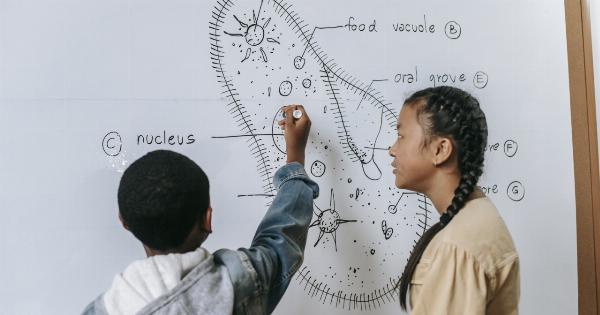Anemia is a condition that is characterized by a reduced level of hemoglobin, the protein in red blood cells that is responsible for carrying oxygen to tissues. This results in fatigue, weakness, shortness of breath, and other symptoms.
Anemia is a common disorder, affecting around a quarter of the global population, and it can be caused by a variety of factors, including nutritional deficiencies, chronic diseases, and inherited genetic mutations. In this article, we will discuss the latest diagnostic tools for understanding the genetics of anemia.
Types of Anemia
There are many different types of anemia, each with different causes. Some of the most common types include:.
- Iron-deficiency anemia
- Vitamin-deficiency anemia, such as folate or vitamin B12 deficiency anemia
- Hemolytic anemia, where red blood cells are destroyed faster than they are produced
- Aplastic anemia, where the bone marrow does not produce enough red blood cells
Genetic Anemia
Some types of anemia are caused by genetic mutations or inherited disorders. These include:.
- Sickle cell anemia
- Thalassemia
- Fanconi anemia
Sickle cell anemia and thalassemia are caused by mutations in genes that affect the production of hemoglobin. Fanconi anemia is caused by mutations in genes that are involved in DNA repair.
Diagnostic Tools
There are many different diagnostic tools that can be used to identify genetic mutations that may cause anemia. Some of the most commonly used tools include:.
Genetic Testing
Genetic testing is a type of medical test that analyzes a person’s DNA to determine if they have any genetic mutations that may be causing their anemia. This can be done through a blood test or a cheek swab.
Genetic testing can identify mutations that cause anemia, and can also help to identify carriers of genetic mutations.
Hemoglobin electrophoresis
Hemoglobin electrophoresis is a laboratory test that separates and identifies different types of hemoglobin in the blood. This test can be used to diagnose sickle cell anemia, thalassemia, and other types of genetic anemia.
The test works by placing a small sample of blood on a gel, and then applying an electric current. Different types of hemoglobin will move through the gel at different speeds, allowing them to be separated and identified.
Bone Marrow Biopsy
A bone marrow biopsy is a medical procedure where a small sample of bone marrow is removed from the bone and examined under a microscope. This test can be used to diagnose aplastic anemia, and can also be used to identify other types of anemia.
The test is typically performed under local anesthesia, and can be done on an outpatient basis.
Cytogenetic analysis
Cytogenetic analysis is a type of laboratory test that analyzes the chromosomes in a person’s cells. This test can be used to identify chromosomal abnormalities that may be causing anemia, including Fanconi anemia.
The test works by taking a sample of the person’s cells and then growing them in a laboratory. The cells are then stained and examined under a microscope to look for abnormalities.
Treatment Options
The treatment options for anemia will depend on the cause and severity of the condition. In some cases, anemia can be treated by addressing underlying nutritional deficiencies or by managing an underlying health condition.
In other cases, more specific treatments may be required, such as:.
Blood transfusions
In some cases, a blood transfusion may be necessary to replace lost blood cells or to increase the level of oxygen-carrying hemoglobin in the blood. Blood transfusions can be done on an outpatient basis, or may require hospitalization.
Bone marrow transplant
In some cases of severe anemia, a bone marrow transplant may be necessary to replace the bone marrow that is not functioning properly. This is a complex and risky procedure, and is typically only used in cases where other treatments have failed.
Growth Factor Therapy
Growth factor therapy is a type of treatment that involves the use of medications to stimulate the production of red blood cells. This treatment may be used in cases of anemia where the bone marrow is not functioning properly.
Conclusion
Anemia is a common disorder that can be caused by a variety of factors, including nutritional deficiencies, chronic diseases, and inherited genetic mutations.
Understanding the genetics of anemia can help to identify the underlying cause of the condition, and can lead to more effective treatments. The diagnostic tools discussed in this article, including genetic testing, hemoglobin electrophoresis, bone marrow biopsy, and cytogenetic analysis, can help to identify genetic mutations that may be causing anemia.































